Thin yet fluffy, lacy and light, this Neer Dosa recipe yields a breakfast that you’re sure to love. Also known as neer dose and a special breakfast from the Mangalorean cuisine, these super soft and tasty Indian crepes are made with a handful of ingredients – rice, water and salt. They also just so happen to be naturally gluten free and vegan, making them the perfect menu item for your weekend brunch.
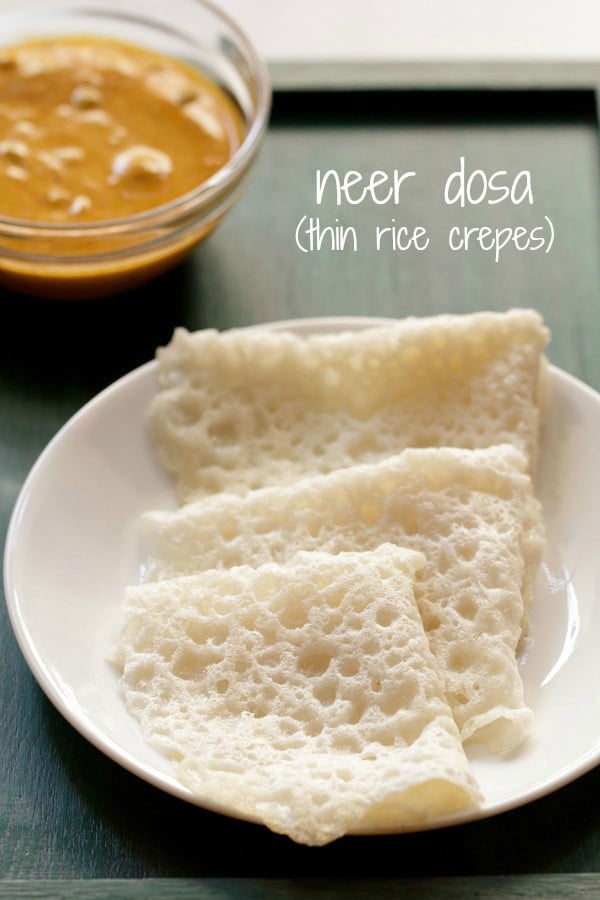
About Neer Dosa
Neer dosa are is a popular dosa variant from the Indian state of Karnataka. “Neer” means “water” in the Tulu language, meaning this dish is literally known as “water dosa.” They are so named because the batter is quite thin and watery, unlike the usual thick dosa batter.
One of my aunts – who is from the Bunt community in Mangalore – introduced me to this lovely breakfast specialty. I make them often because they are easy to prepare and don’t require any fermentation (or much forethought).
These lacy dosa pair well with coconut chutney for a delicious breakfast, or can be added to your tiffin box for a nice addition to your packed lunch.
Table of Contents
Since they are so light, you can easily devour 5 to 6 of them in one sitting, so make sure you plan accordingly when making the batter.
Neer dosa are easy to prepare as fermentation is not required. You just need to soak the rice for about 4 to 5 hours and then grind it. If you want to eat the neer dosa first thing, you have to soak the rice overnight.
If you’re in a real rush, you can also swap in rice flour to cut back on soaking time. Rice flour requires just a 30 minute soak in water prior to making the batter. I sometimes use this tip when we wake up extra hungry and have cravings for neer dosa. Once the batter is ready, you can start making the crepes and eat them hot from the pan.
Apart from coconut chutney, neer dosa can also be served with Veg Sagu, Vegetable Kurma or Potato Kurma. For kids, it is commonplace to serve this dosa with coconut milk or milk sweetened with some jaggery.
How to Make Neer Dosa
Make Rice Batter
1. Soak 1 cup rice for 4 to 5 hours or overnight, using enough water to cover it. I generally soak overnight and then grind or blend the next day.
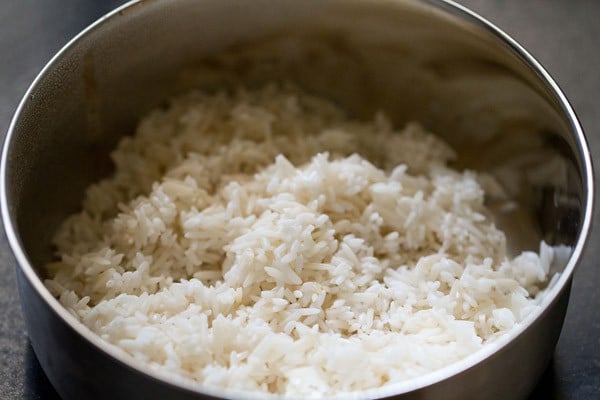
2. Drain the soaked rice and add the grains to a powerful blender or mixer-grinder.
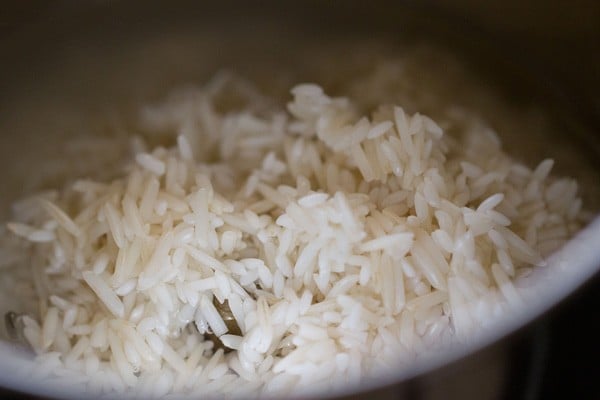
3. Add *just* enough of water for grinding the rice – about ¼ to ⅓ cup. If you add plenty of water, you won’t be able to grind the rice well.
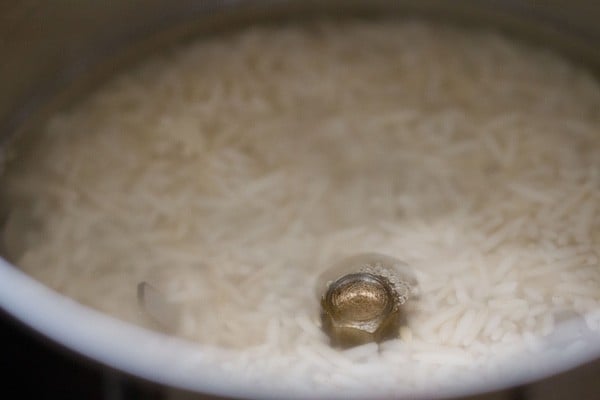
4. Grind or blend to a smooth batter and then pour it in another bowl or pan. The batter should not have any coarse particles of rice. If the mixer-grinder becomes hot, then wait for a few minutes for it to cool down and then grind again.
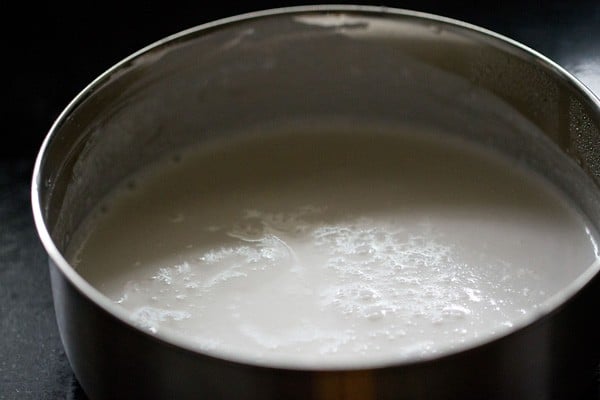
5. Add more water to get a thin, flowing, watery consistency almost like that of milk. The addition of water depends on the quality and kind of rice; add water accordingly. Now you can add from 1.5 to 2 cups of water. I added 2 cups of water for 1 cup of rice.
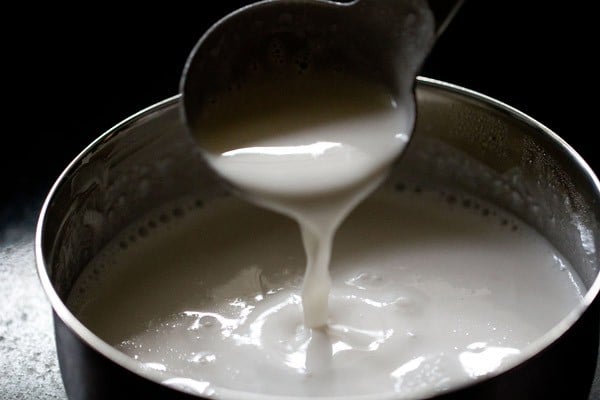
6. Add salt as required and mix well.
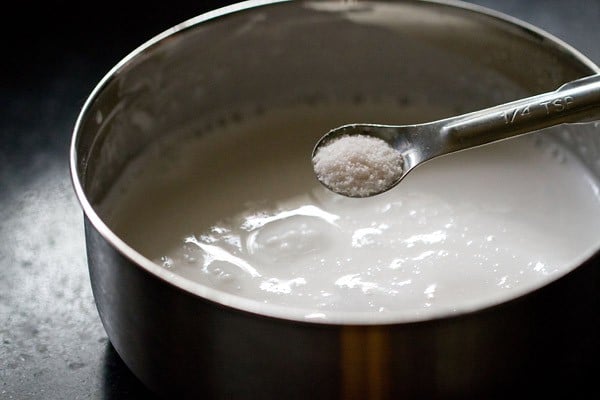
Cook Neer Dose
7. In a cast iron skillet or tawa or a nonstick pan, drizzle ½ teaspoon of oil with a high smoke point.
TIP: If using a cast iron skillet, sprinkle some water to check the temperature of the pan before adding the oil. If the water droplets sizzle and evaporate, then the pan is ready to make dosas. Avoid using this method on a nonstick pan as adding water on a hot nonstick pan will affect the coating.
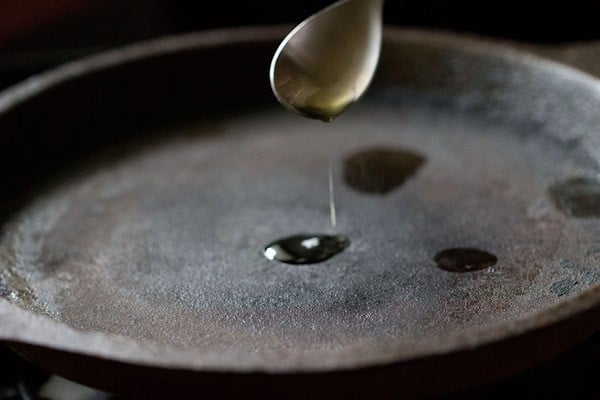
8. Spread the oil all over with a spoon, a small piece of cotton kitchen towel or a halved onion.
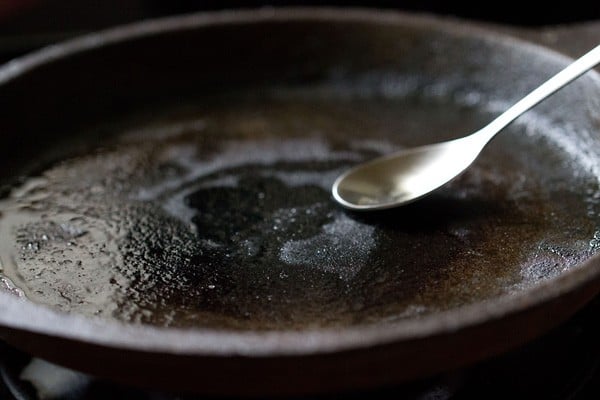
9. Stir the batter in the bowl and take a ladle full of batter.
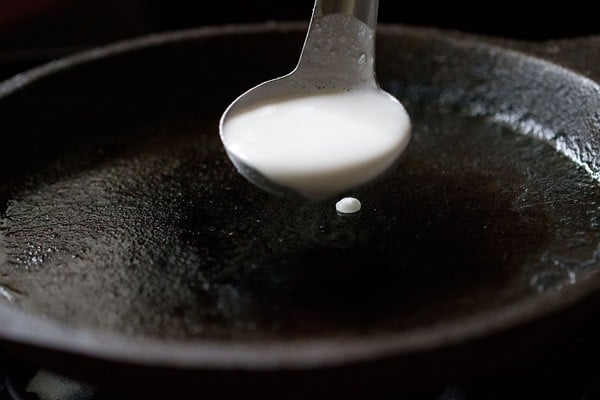
10. Then pour the batter moving from the outside of the pan to the inside, like we do for Rava dosa. You can also spread the batter by tilting and rotating the pan.
Do not spread the batter with the back of the ladle like we do for regular dosa.
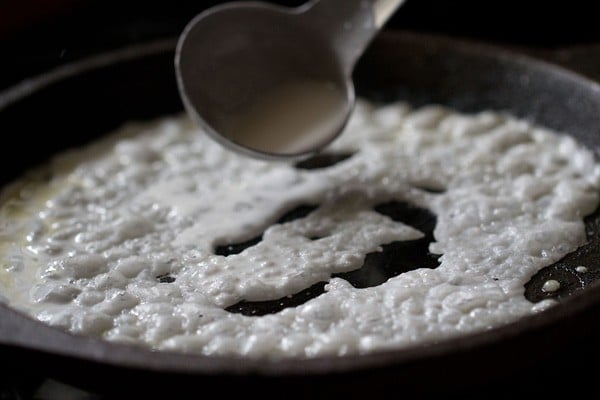
11. Fill in any large gaps with extra batter.
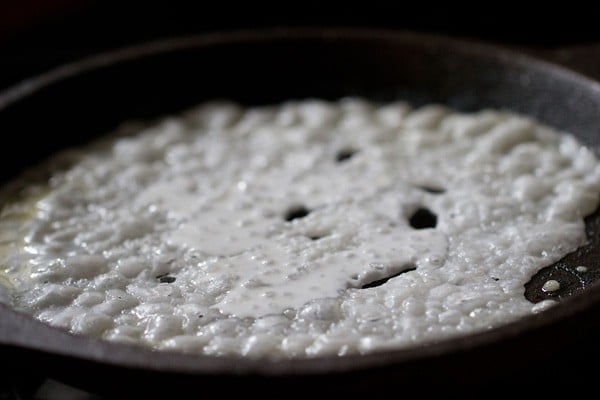
12. Cover with a lid and cook the neer dosa until cooked through. Don’t brown it.
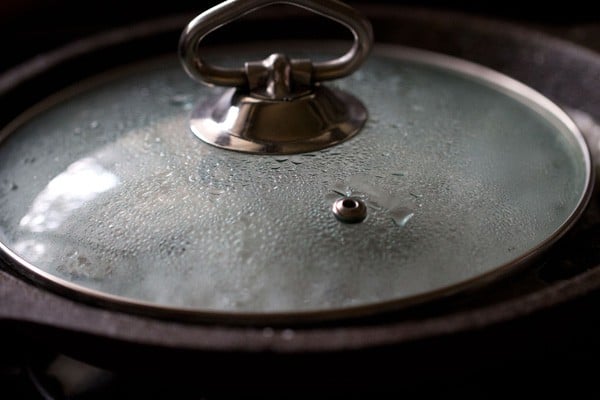
13. In the photo below, the neer dosa is done. When the the batter has firmed up and looks cooked, the dosa is done. The edges or sides will also separate from the pan.
These rice crepes are never flipped. Only the base has to be cooked well.
You can choose to drizzle some oil on the top of the neer dosa if you prefer.
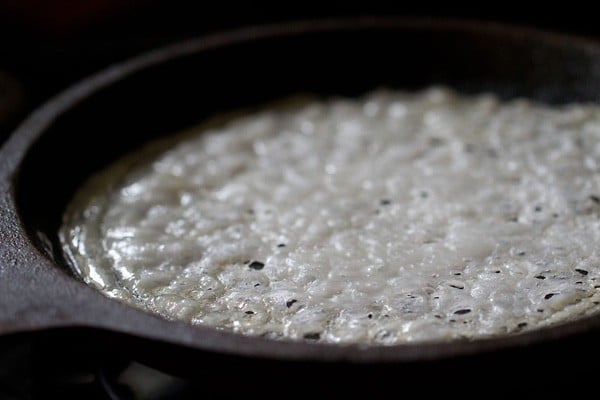
14.Fold the completed neer dosa into a triangle on the tawa or skillet itself.
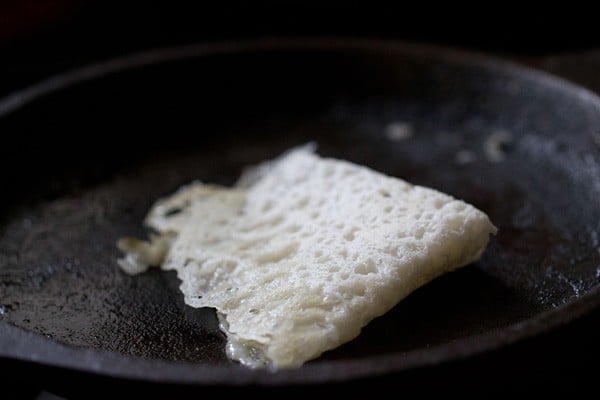
15. Then remove the dosa and place it on a plate. Make the remaining neer dosa this way and place them separately – without them touching each other – on a plate.
Once they cool down, you can keep them in a casserole or an airtight container/dabba.
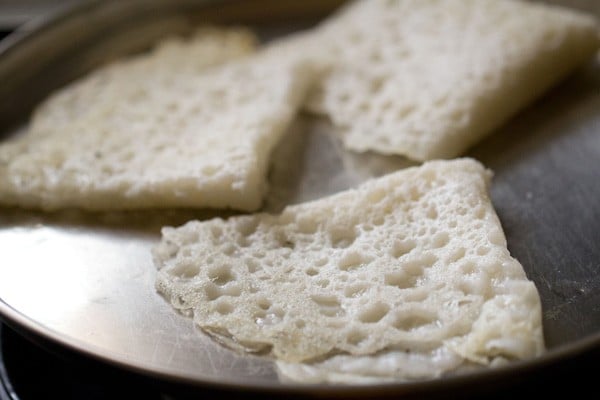
16. Serve neer dosa warm with coconut chutney, potato sagu, or veg kurma. Neer dosa will remain soft even after they cool down, so you can serve them later, too.
Since they remain soft, they are a good option to pack in tiffin-box or lunch-box.
Storage
Once the dosas are done cooking, don’t stack them while they are still hot as they will stick to each other. Stack them up only when they are thoroughly cooled. Or you can choose to place them between parchment papers.
You may ask “Can we keep neer dosa batter in fridge?”.
My answer is yes, you can. It stays good for a 1 to 2 days. Store it in an air-tight container. I would not recommend storing it for more than 2 days as the batter can go sour or become rancid.
If in case the batter has thickened a bit after refrigeration, then add a splash of water to thin the consistency slightly.
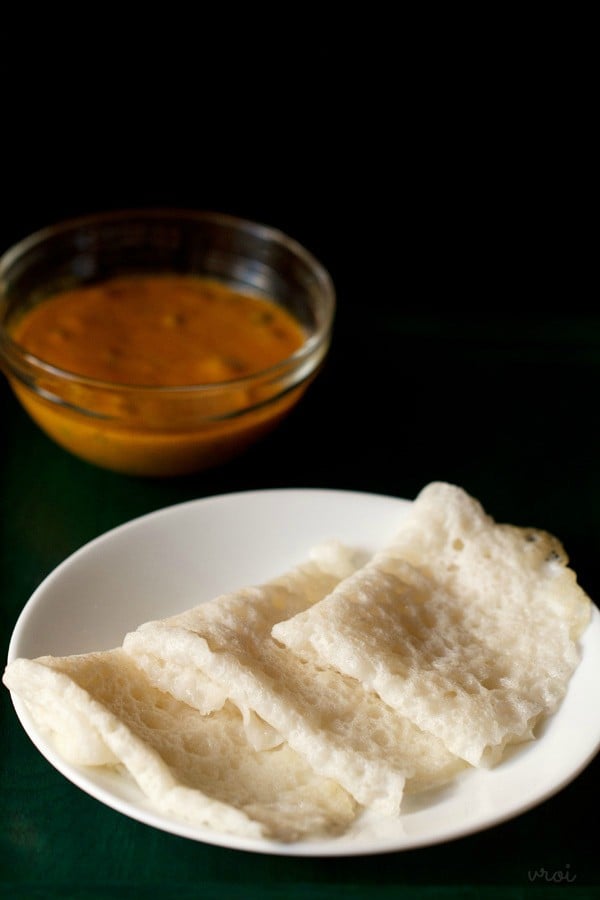
Tips & Tricks for Best Neer Dosa
These simple, lacy rice crepes are rather easy to make. That said, I have assembled a list of my best advice for ensuring they come out perfectly every time.
A Thin Batter is the key to get perfect neer dose
The batter consistency should be watery, thin and flowing. The batter should not be thick. If the batter has a pouring consistency, then you will get the coveted tiny holes and lacy appearance of neer dose. If you cannot easily pour the batter, then you’ll need to add some more water to thin it down.
Thick batter will cause cracks in the neer dosa; be sure to have a pourable, thin consistency.
If the batter becomes too thin, then the dosas will fall flat and break while lifting. In this case, add some rice flour to slightly thicken the batter.
Cooking these soft crepes in the best way
Much like pancakes, you need to heat the skillet or tawa very well before you pour the batter. Before making each neer dose, stir the batter very well with the ladle as it tends to settle over time.
The tawa or skillet should be well-seasoned if you are using a cast iron one. You could also opt to use non-stick pan. If the cast iron skillet is not properly seasoned, the batter or the dosa will stick to the pan.
Variations
The addition of coconut is optional, but adds a lovely flavor and texture. Add about 2 to 3 tablespoons of fresh grated coconut while grinding the batter. You can also consider adding 1 to 2 tablespoons of unsweetened desiccated coconut.
We make neer dose with either of the Indian varieties of rice like sona masuri, surti kolam, ponni or parmal rice. Basmati rice will also work.
FAQs
Yes, you can. Just soak the rice flour in water for at least 30 minutes and up to 2 hours. For a slightly fermented taste, you can also keep the flour soaking at room temperature overnight.
Uh oh, sounds like the batter must have been of a medium to thick consistency. Simply add a few tablespoons of water to loosen it up, stir the batter thoroughly and try again.
If the batter becomes too thin or thick then the neer dose will crack or break. The batter thickens gradually as it gets up used in preparing the first several dosas. So you need to add a splash of water to thin it a bit. On the contrary if you make a very thin batter, then also the neer dosa will crack.
When the dosa are hot, they will stick together. That’s why neer dosa are not stacked like regular dosas and are instead set on a plate without touching each other.
If the tawa becomes too hot, then it becomes difficult to get the lacy effect. If you use a cast iron tawa, then sprinkling some water brings down the temperature of the surface.
For nonstick, just remove the tawa from flame for a minute and then place it back on the flame. Do not sprinkle water on nonstick tawa as the nonstick coating wears off.
Yes! The rice need not be thick and starchy. You can use any regular variety of short-grained or medium-grained rice. For 1 cup of rice flour, start with adding ½ cup water. Stir and then add more water to make a thin batter. Let the rice batter rest for at least 30 minutes before you make the dosa, stirring well before pan-frying.
If you still have a craving for dosas, I don’t blame you! Here are other varieties of this delightful Indian treat.
More Dosa Varieties!
Breakfast Recipes
Breakfast Recipes
Breakfast Recipes
Breakfast Recipes
Please be sure to rate the recipe in the recipe card or leave a comment below if you have made it. For more vegetarian inspirations, Sign Up for my emails or follow me on Instagram, Youtube, Facebook, Pinterest or Twitter.
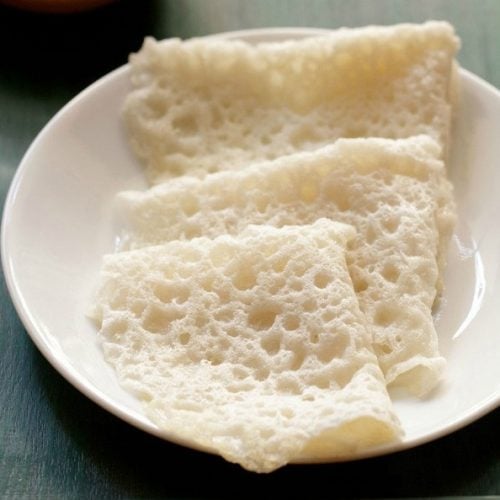
Neer Dosa | Mangalorean Neer Dose
Ingredients
- 1 cup rice – 200 grams, (sona masuri or parmal rice or surti kolam)
- water as required for soaking rice
- ¼ to ⅓ cup water to grind or blend
- 1.5 to 2 cups water to be added later
- salt as required
- oil as required
Instructions
Making neer dosa batter
- Rinse the rice grains a few times. Soak them in enough water for 4 to 5 hours or overnight.
- Later drain the soaked rice and add them in a blender or a mixer-grinder.
- Add water for grinding or blending the rice. Do not add a lot of water as then you won't be able to grind the rice finely.
- Grind to a smooth and fine batter and then transfer the batter to another bowl or pan.
- Add water again to get a thin, flowing, runny and watery consistency. I added 2 cups of water.
- The addition of water depends on the quality and kind of rice. So add water as needed.
- Then add salt as required and mix well.
Making neer dosa
- Heat a cast iron pan or a non stick pan on medium to medium-high heat. Drizzle ½ teaspoon of oil.
- Just spread the oil all over with a spoon or small piece of cotton kitchen napkin or with half of an onion.
- Stir the batter in the bowl with the ladle. Then fill the ladle with the batter.
- Pour the batter moving outwards to inside like the way we do for rava dosa.
- Fill in the large gaps too with some of the batter.
- Cover with a lid and cook the dosa till the batter firms up. Don't brown it or flip it. The edges will also separate when the dosa is cooked. You can drizzle a bit of oil on the top of neer dosa if you prefer.
- Make a triangular fold on the tawa itself.
- Then remove the dosa and place it in a plate. Make neer dosa this way and place them separately without them touching each other in a plate.
- Serve neer dosa hot or warm with coconut chutney, veg sagu, veg korma.
Notes
Batter Consistency
- Keep in mind that the batter consistency for neer dosa should be runny, watery, thin and flowing. It should not be thick or with a medium consistency. If the batter has a pouring consistency, then you will get lacy appearance of neer dose. If you cannot easily pour the batter, then you’ll need to add some more water to thin it down.
- A thicker batter or a very thin batter will make for cracks in the neer dosa. So make sure to have a pourable, thin consistency.
- If the batter becomes too thin, then the dosa will fall flat and break while lifting. In this case, add some rice flour to slightly thicken the batter.
Cooking Neer Dose
- You do need to heat the skillet or tawa very well before you pour the batter. Keep the heat to medium or medium-high. Remember to use a well seasoned cast iron tawa or skillet, so that the batter does not stick.
- Before making each neer dose, stir the batter very well with the ladle as the ground rice particles tends to settle over time.
Variations
- You can consider adding about 2 to 3 tablespoons of fresh grated coconut while grinding the batter. It gives a lovely flavor.
- You can use Indian rice varieties like sona masuri, surti kolam or parimal rice. Basmati rice will also work.
Storage
- Once the neer dosa are made, then don’t stack them up while they are hot as then they will stick to each other. Once cooled then you can stack them up. Or you can place a parchment paper between each neer dose.
- Neer dosa are best enjoyed hot or warm. But you can also eat them when they cool as they remain soft and taste good. Thereby making them a good option to pack in a tiffin box.
Nutrition Info (Approximate Values)
This Neer Dosa from the archives first published in April 2015. It has been updated on November 2024.
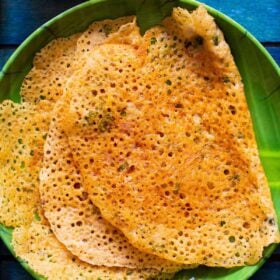

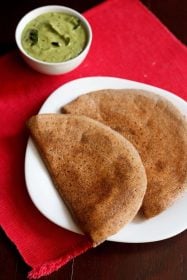
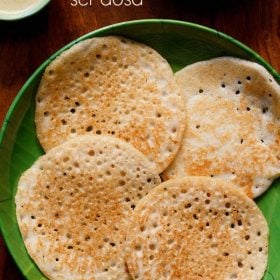
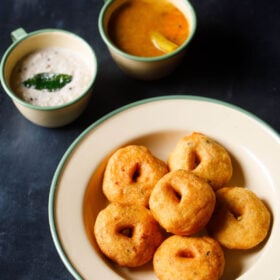
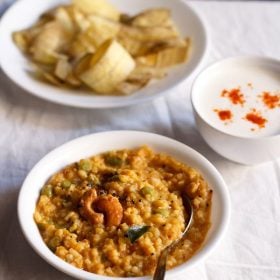
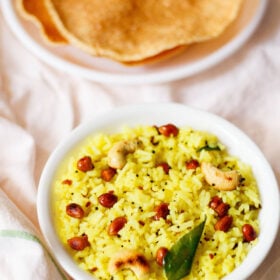
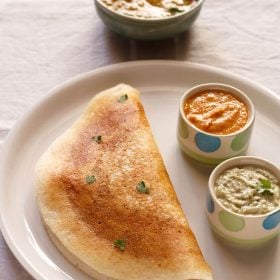








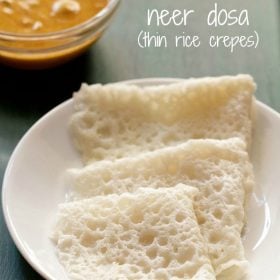
Amazing !
Tried this today and it came out really good…superb recipe with detailed instructions.
thank you winnie. thanks for the rating too.
Great recipe! Came out really well if instructions are followed to the T.
thanks a lot for this review and the rating too.
Love them. No restrictions on how many I can eat.
Going to try it tomorrow- I will give you feedback. I ate them when we visited Mangalore. Loved the silky softness.
sure and thanks. happy cooking.
I have neer dosa tava please suggest
i did not understand your comment. you can elaborate a bit more.
Can we make neer dosa with rice powder
yes you can. just soak rice flour in water for at least 30 minutes to 1 or 2 hours. for a slight fermented taste, you can also keep overnight.
Please post sorekai dosa madam????
Sowmya, I will try to post this dosa variety.
Thank you
I tried the dosa but it came out crispy not soft as yours.what’s the wrong I did plz advice
deeps, looks like the batter must have been of medium to thick consistency. then the dosas do turn out crisp. so try to make the batter on the thinner side.
Hi jii,
How long the batter will stay good if we add coconut?
Radhu, the batter is not fermented. you can keep it in fridge for one day.
Can we make neeṛ dosa with rice flour?
neer dosa can be made with rice flour.
Neer Dosa can only be done with rice flour.
You should know what quantity of water and rice flour to be added.
Thank You for such delicious recipe, it is very easy and instant substitute of Dosa, I also add some Ginger-Garlic paste, Green Chilly, Onion & Coriander, it’s so yummy. Thanks again
thanks rajesh for this feedback. the variations you have added must have made the neer dosas taste yum.
Hi Dassana,
I had taken 1.5 cups of sona masuri rice and soaked it overnight. I had added almost 2.25 cups of water to make batter. When I poured in the pan, it started breaking from the pan. While pouring it didn’t give that holes also and was watery. I added more rice flour since I thought it was due to more water. After that it started coming fine and I was able to save some dosa. Again later it began to break and come out of pan. I am confused on whether it is due to more water or less water. Is there a way to check the batter. I had actually got a milk like consistency.
Please help ?
Remya, If the batter becomes too thin then the dosas will break. It is because of more water. What happens is that when you add rice flour, the rice flour gets used up in preparing the dosa. As a result the batter becomes thin. so as you go on making dosas you can add some more rice flour. this also happens while making rava dosa.
Thanks for the reply.. I made a second batch with less water. Also added some coconut and boiled rice as I got some tips from my maid who was in Mangalore. Came out really well ?
thats great. coconut can be added and with boiled rice also neer dosa tastes good. thanks for sharing these bits.
Very nice recipe. Tried it and my hubby liked it, even my picky eater son also liked it.
thank you alekhya. glad to know.
if we use coconut oil ..taste good
thanks for the suggestion.
can we use the regular dosa batter to make this dosa?
no. you won’t get the lacy effect with regular dosa batter, plus it won’t be soft.
Once we fold the dosa does it stick or is it unfolded easily? I couldn’t unfold the dosa I prepared. Also few dosa’s had tiny holes and lacy effect but next few were more limpy and less lacy effect and holes than first few. What could be the reason? I was stirring the batter before taking it in the spoon
once once you fold the dosa, they stick. its difficult to unfold them. thats why neer dosas are not stacked like regular dosas. if the tawa becomes more hot, then it becomes difficult to get the lacy effect. this could have happened with the subsequent dosas. if you use a iron tawa, then sprinkling some water brings down the temperature of the tawa. for non stick just remove the tawa from flame for a few seconds and then keep back on the flame. do not sprinkle water on non stick tawa as the non stick coating wears off.
Next time I will try Not to overheat my pan. I love your recipes. The best part of your recipes is accurate measurement of ingredients. You must have studied and experimented a lot before putting this on your website.
pleased to know this thank you for your kind and positive words 🙂 yes we do a lot of home work and research before posting on the blog.
Hi Dasanna,
I just love your recipes. Thank you so much for sharing such great recipes with us. I am planning to try your neer dosa recipe today. I have tried many of your recipes and they have always turned out great. My husband loves the meals I prepare and it is possible only because of you. Since we live in the UK, we used to miss Indian food as there are not many good Indian restaurants where we live. Thanks to you I can prepare most of the stuff at home now.
thank you afrin. your comment is encouraging and means a lot to me 🙂
Can I make neer dosa in non stick tava,without seasoning oil
yes you can try.
Hi Dassana, I’m a huge fan of your website and use it religiously. Tried the neer dosa but something went wrong, there were no tiny holes and it got brown really fast! Will try it again but any suggestions where I’ve gone wrong?
thanks. i feel the batter needed to be thin. if the batter is even slightly thick, then the holes or lacy effect won’t be there. and getting browned is due to the type/quality of pan. always cook on a low flame when the pan gets heated fast.
Hi, thanks for the recipe. I am from Mangalore, where it is originated from and I add coconut milk to the batter to give it an authentic Mangalore Neer dosa taste.
thankyou smita 🙂 for sharing this information would try next time adding coconut milk and you are welcome.
Hi amit
Thanks a lot ur recipes r so easy n yummy.
I tried them n yumm it goes n with no time u canmake it
Thanks a lot dear
Keep the good work n give us yummy n easy recipes
Thanks again
thankyou efania 🙂 for your kind words and you are always welcome.
Thanks
Welcome Dr San
Hi dasanna neer dosa recipe is good bt if u add gingelly oil while making dosa it wil give u good aroma since im frm mangalore i used to do
thanks shashi for the suggestion 🙂 will try.
I love your recipes! I live in South Africa and sometimes I battle to find some of the ingredients required in your recipes. For instance, sona masuri, parimal rice and surti kolam rice. Can Basmati rice be used instead? or should the rice be thick and very starchy? Also, if I use ready made rice flour, how much water would I need to use?
yes you can basmati rice, if you are not able to get the other varieties. the rice need not be thick and starchy. you can also use regular variety of short grained rice, whichever is available in south africa. for 1 cup of rice flour, you can add first 1/2 cup water. stir and then add more water to make a thin batter. keep the rice batter for atleast 30 minutes before you make the dosas.
Great recipe. Thanks.
welcome jasmine
Will try both neer dosa n kurma n share my cooments.
Hello…. Wow to all the recipe, here actually we “must” add grated coconut while grinding and it will turn out to be a smooth paste… this will be very yummy with bits of jaggery mixed with grated coconut, this is how it is typically served back home. worth a try…
i simply love all your recipe..you please try and make the needed update in the above recipe.
thanks kavya. sometimes i add coconut. i will update with coconut pics in the recipe.
very clearly explained !!! mine came out very well.. Though not round… any suggestions to make them round
thanks neha. you have to pour the batter from outward to inside and cover the whole pan/tawa. then you will get round shape. practice also matters.
I find recipes easier
Hi dassana, My son’s favourite dish is dal makhani. i tried to make it asking several people and several blogs none turned out great. while desperately browsing for dal makhani recipe i came across ur restaurant style dal makhani and gave it a try. it turned out so well that day my son gave me a thumbs up for that dish. thank u so much for posting.
welcome rekha. glad to know that your son liked the dal makhani recipe. thanks for sharing positive review.
I just love the way u describe each receipes….it motivates me a lot…Thanks
welcome akanksha
Hi Dasanna, your recipes are amazing. I became a fan for this website.
I have a small doubt kindly help me out can I ground the rice in the night and keep the batter whole night and prepare dosa in the morning like we do for normal dosa. Or I have to prepare dosa immediately after ginding it.
thanks sandhya. yes you can grind the batter in the night. my mother does this method wherein she grind the batter at night and keep the batter to ferment overnight at room temperature. there will be a slight sour taste in the dosa due to the fermentation. if you don’t prefer the sour taste than you can keep the batter in the fridge.
Nice recipe tooooo easy I like this
This reminds me of a Chinese snack/desert that we steam to cook. Will definitely try this – thanks for posting!
welcome sharon
Hi Dassana, ur recipes are amazing i always follow ur recipes nd they have actually came nice
Thank you and ur doing a great job
welcome pooja. thanks for sharing positive feedback.
Nice recipe. Easy n comfort for housewives.
Hello dassana
Reg adding maida to rava dosa can I double the rice floor or can I substitute with something else / is it compulsory to add maida.
One more thing for few of recipes I’m not getting this comment option
What do I do to subscribe for newsletters
kruthika, you can skip the maida. just add more rice flour. comments are closed temporarily because of hectic schedule. i have added your email address in feedburner email.
Hi dassana tried as always tried under u r guidance came out well I hadn’t expected as my earlier attempts were disasters thanks for u r tips they really are worth following n yield awesome results
Yest tried rava dosa it was also good but not really crisp they didn’t break but were not crisp where did I go wrong?
thanks kruthika. to get crispness in rava dosa, cook them for a longer period of time. the batter also has to be of right consistency. if the batter is thick or very thin then the rava dosa will not become crisp. the pan should also be hot. first always try making a small rava dosa. see the texture. if its limpy and falls off when flipping, it means the batter is too thin. then add some rice flour. if the dosa is thick but without any holes in them (netted effect), then the batter is thick. add a few tbsps of water.
To amazing recipe
Very nice one,…come out very well… Try so many dishes from ur blog all are great.. Why don’t u post some chicken dish or mutton .. My husband is hard core nonvegetarien ..and I m very bad in it …
thanks anjali. i can not post non-vegetarian recipes as i am an vegetarian.
Nice recipe, keen to try. Will this work with Basmati rice?
toutfou, yes it will work
Hi dassana, I am from Mangalore and your need dosa is perfection personified, I learnt making neer dosa only after marriage. U r too good.
Rgds n take care
Marina
thanks marina for sharing this positive feedback.
Hi, today I tried this recipe for breakfast…. And my neer dosas turned out exactly how you have shown in the pictures above..! Thank you so much for this amazing blog of recipes… I love your website and have tried other delicious recipes too, like Mojito, parathas etc etc…..
Thank you again!
P.S. The pictures help a lot.
welcome rajeshwari. glad to know this. thanks for sharing positive feedback on recipes.
Hi Dassana, just wanted to share my mum’s recipe (we’re konkani) for neer dosas. It requires a bit lesser time…
Just soak 1 cup rice for about half hour and grind it with about 1/2 to 3/4 cup freshly grated coconut. Add a bit of salt and make the batter a bit watery like rava dosas and proceed to roast as you mentioned. 🙂
thanks a lot sheha for sharing your mom’s recipe. i will give it a try.
It is a pleasure to read your blog Dassana! Thank you for such simple descriptions and methods. I find myself running a search on your blog whenever I am about to try something for the first time. I hope the Neer Dosa comes out well 🙂
Cheers and best wishes to you!
welcome shrutika. nice to know this. thanks for sharing your positive feedback and best wishes. happy cooking.
hi dassana,
Please try this by using sesame oil dip half of an onion in oil..
thanks swati for the tip. i will give it a try.
Also you can have neer dosa with Aam ras too. Tastes very delicious!
In Mangalore, few of the hotels serve neer dosa and paneer chilly combo.
thats a killer combo of neer dosa with aam ras 🙂 paneer chilli and neer dosa is also a great combo. thanks for sharing and letting us know.
Hi your dishes are very yummy… plz do keep adding.. and we keep cooking….
thanks nilofer
Hi dassana,
Please try this by adding desicatted coconut (preferably of fresh coconut and not the dried one) to the rice while grinding. It gives out a nice flavour and adds to the taste! 🙂
thanks anjali for sharing this tip. i know about it and sometimes i add. thats why i have mentioned in the tips also. when i made this dosa for the blog i didn’t have fresh coconut.
Hello.
Could this be done by using ground rice flour?
joyce, you can make with ground rice flour. the consistency should be thin.
hi Dasanna, it means we need to use raw rice for this na…. will it nt cum well with boiled rice?
komathi, i have never made with boiled rice. i always make neer dosa with raw rice. you will have to give a try with boiled rice.
Thanks for the reply Dasanna. I tried ur samosa.. and the crust i just loved it….. got appreciations from all over 🙂 ur blog is simply awesome…..
Have been following ur recipies past 2 months… but stated commenting only nw 🙂
welcome komathi. nice to know this. thanks for sharing your positive feedback.
We are from Kerala.we make same with the boiled rice with grinding coconut or adding coconut milk just before making. But here we make thick ones like Aadai.It is called ” Verumarisi Adai.
thanks usha for sharing the info and the method. nice to know this.
Yummy!!! I am from Mangalore Dassana and this is my all time favorite breakfast. You got it all perfect. After looking at this, I think its time for me to soak the rice 😉
thanks minakshi for this wonderful feedback.
There was some issue, tried giving 5 stars it didn’t do that time 🙁 *****
minakshi, some problem with the software. it does not allow 5 stars some times. but your positive feedback is more than 5 star.